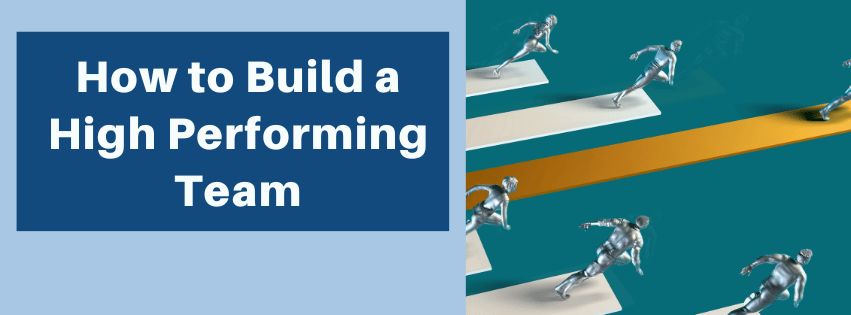
Competitive organizations of today harness the power of teamwork as a strategic asset. It’s vital to focus on fostering effective teams that synergize and innovate. This article unveils a practical roadmap to build and nurture high-performing teams, emphasizing its significance for new teams.
The Roadmap to a High Performing Team
High-performance teams are more than just a group of talented individuals. They are a result of strategic hiring, clear goal-setting, effective communication, supportive culture, and opportunities for growth and development. Here, we provide a guide to building high-performance teams.
Hiring the Right People and Setting Goals
It all begins with hiring the right people who are not just skilled, but also align with the organization’s culture and values. For example, a renowned software company that prioritized cultural fit in their hiring process created a cooperative and dedicated team.
Leaders should set clear goals and communicate them effectively to ensure team alignment. A successful eCommerce company adopted this approach, setting quarterly goals for its teams, which boosted engagement and productivity.
CASE STUDY: Learn from Bird Construction’s success with Summit’s tailored leadership training.
Encouraging Collaboration and Fostering a Positive Culture
A culture of relationship building, open dialogue and seamless collaboration can significantly enhance team performance. An innovative renewable energy company, by using digital collaboration tools and regular team meetings, fostered such a culture, bringing innovative ideas to life.
A positive and supportive work culture is also essential. A leading healthcare provider fostered mutual respect, open communication, and accountability, resulting in higher engagement and performance levels.
Providing Growth Opportunities
High-performing teams thrive on continuous learning and development. A global consulting firm committed to growth offered regular training, mentoring, and professional development opportunities, leading to the formation of a highly skilled and adaptable team.
RELATED: Five Reasons Why Team Building is Important in 2023
The Path Ahead
Building effective teams requires deliberate and sustained effort. The principles and real-world examples presented in this article can guide HR leaders and managers on their journey towards building and nurturing high-performing teams. With strategic planning and nurturing, organizations can cultivate teams that exceed their goals with increased efficiency, productivity, and collaboration.
Whether you’re forming a new team or improving an existing one’s performance, remember that the effort invested in team building will reap benefits in the form of improved performance and a harmonious work environment.
Listen: Scott Kress on High Performance Teams
The Power of Teamwork in New Teams
In the high-stakes business world, team synergy can drive innovation, enhance efficiency, and nurture a positive work culture. New teams, however, often face hurdles in achieving this synergy. They must overcome communication barriers, bridge gaps in understanding, and build trust among members. Here’s where team building steps in, serving as a vital tool to enhance the cohesiveness and efficiency of new teams. We’ll delve into the key benefits of team building, backed by real-world examples to demonstrate its profound impact.
Establishing Shared Goals
The first step in team building is establishing shared goals. Team-building activities, when aligned with the team’s objectives, foster an environment where members understand their roles and contributions.
For instance, a growing tech startup used team-building retreats to define shared goals within their new team. These activities resonated with the company’s vision and enabled team members to understand their roles within the larger organizational objectives. This strategic approach fostered unity and streamlined team dynamics.
Enhancing Communication and Trust
Effective communication and trust form the backbone of any successful team. Team building activities like Building Bridges promote open communication and help members articulate their ideas in a supportive environment.
Consider a multinational pharmaceutical company that used team-building activities to harmonize communication across recently merged departments. This initiative created an atmosphere of trust where employees felt comfortable sharing their ideas, leading to improved cohesion and productivity.
Trust building exercises also play a key role in nurturing new teams. A leading financial institution utilized such activities to boost trust amongst its new project teams. The results were astonishing – a united, productive team that showcased the importance of trust in team efficacy.
Discovering Strengths and Fostering Collaboration
Identifying individual strengths and weaknesses within the team can significantly boost performance. A fast-growing digital marketing agency uncovered the unique strengths of its members through team-building exercises. This led to task redistribution, improved communication, and collaboration, driving team effectiveness.
RELATED: Strength Deployment Inventory® at a Glance
Collaboration lies at the heart of any successful team. Team building activities provide the opportunity for members to work towards common goals, fostering better understanding and willingness to support each other. An education technology company saw improved inter-team relationships and a more collaborative work environment after introducing team-building activities that promoted cooperation.
At Summit, we offer corporate team building activities and workshops designed to equip teams and leaders with the necessary skills and foster positive team relationships. We’d be delighted to discuss how your team could benefit from our programs. Contact us to learn more and let us help you grow your team towards high performance!

